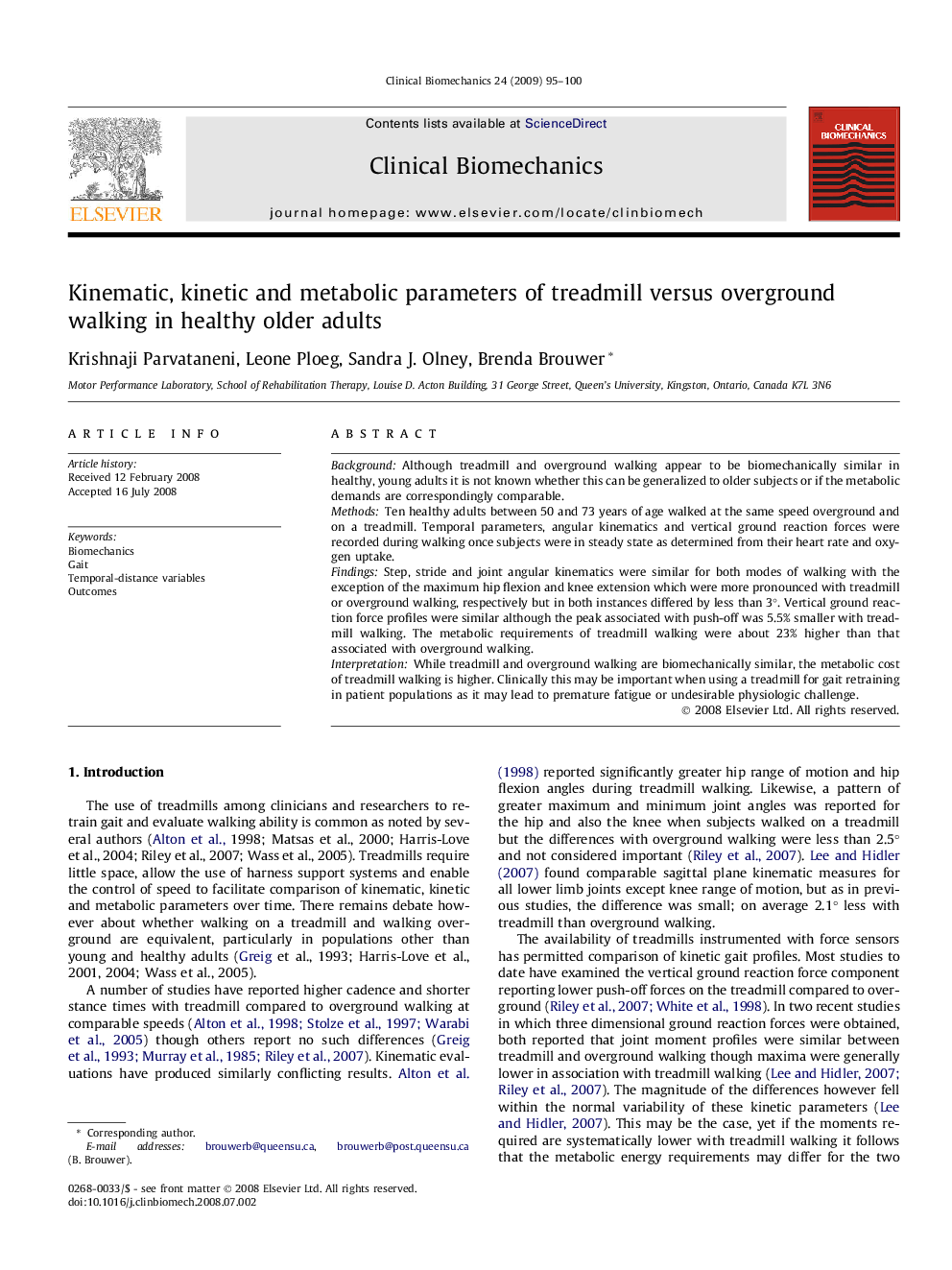| Article ID | Journal | Published Year | Pages | File Type |
|---|---|---|---|---|
| 4050851 | Clinical Biomechanics | 2009 | 6 Pages |
BackgroundAlthough treadmill and overground walking appear to be biomechanically similar in healthy, young adults it is not known whether this can be generalized to older subjects or if the metabolic demands are correspondingly comparable.MethodsTen healthy adults between 50 and 73 years of age walked at the same speed overground and on a treadmill. Temporal parameters, angular kinematics and vertical ground reaction forces were recorded during walking once subjects were in steady state as determined from their heart rate and oxygen uptake.FindingsStep, stride and joint angular kinematics were similar for both modes of walking with the exception of the maximum hip flexion and knee extension which were more pronounced with treadmill or overground walking, respectively but in both instances differed by less than 3°. Vertical ground reaction force profiles were similar although the peak associated with push-off was 5.5% smaller with treadmill walking. The metabolic requirements of treadmill walking were about 23% higher than that associated with overground walking.InterpretationWhile treadmill and overground walking are biomechanically similar, the metabolic cost of treadmill walking is higher. Clinically this may be important when using a treadmill for gait retraining in patient populations as it may lead to premature fatigue or undesirable physiologic challenge.
